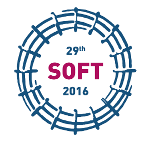Speaker
Songlin Liu
(Institute of Plasma Physics Chinese Academy of Sciences)
Description
China Fusion Engineering Test Reactor (CFETR) is an ITER-like superconducting tokomak reactor. Its major radius is 5.7m, minor radius is 1.6m and elongation ratio is 1.8. It is possible upgrade to R~6 m, a~2 m. CFETR mission and objectives are to bridge gaps between ITER and DEMO, and to realize fusion energy application in China. CFETR has two phases. Phase I is to demonstrate full cycle of fusion energy with Pf = 200MW, and to demonstrate T self-sustained with TBR ≥ 1.0 and long pulse or steady-state operation with duty cycle time ≥ 0.3 ~ 0.5. Phase II is to perform validation of DEMO technology, including advanced blanket with TBR≥ 1.1 and high electricity gain.
As a risk mitigation strategy, three blanket concepts (i.e. the He-cooled ceramic blanket, the He-cooled LiPb blanket, and the Water-cooled ceramic blanket) are under development and evaluation in parallel for CFETR from ITER TBM program.
Two options of the Water-cooled ceramic blanket for CFETR are being designed in Institute of Plasma Physics, Chinese Academy of Sciences (ASIPP). One employs PWR condition. Another is focused on a water cooled breeder blanket with superheated steam as advanced option. It is expected to enhance tritium breeding in the viewpoint of neutronics, on the other hand, the superheated steam at higher temperature can improve thermal conversion efficiency. Li2TiO3 pebbles and Be12Ti pebbles are chosen as tritium breeder and neutron multiplier respectively for two options.
In this contribution, designs and performance analyses of the water cooled breeder blanket for CFETR phase I and Phase II are reported under PWR and superheated steam cooling conditions, respectively. Main issues are proposed and discussed.
Co-authors
Andrei Khodak
(Princeton Plasma Physics Laboratory, PO Box 451, MS-38, Princeton, NJ 08543,, United States)
Hutch Neilsion
(Princeton Plasma Physics Laboratory, PO Box 451, MS-38, Princeton, NJ 08543,, United States)
Kai Huang
(Institute of Plasma Physics Chinese Academy of Sciences, Hefei, Anhui 230031, China)
Kecheng Jiang
(Institute of Plasma Physics Chinese Academy of Sciences, Hefei, Anhui 230031, China)
Peter Titus
(Princeton Plasma Physics Laboratory, PO Box 451, MS-38, Princeton, NJ 08543,, United States)
Songlin Liu
(Institute of Plasma Physics Chinese Academy of Sciences, Hefei, Anhui 230031, China)
Xiaoman Cheng
(Institute of Plasma Physics Chinese Academy of Sciences, Hefei, Anhui 230031, China)
Xuebin Ma
(Institute of Plasma Physics Chinese Academy of Sciences, Hefei, Anhui 230031, China)

